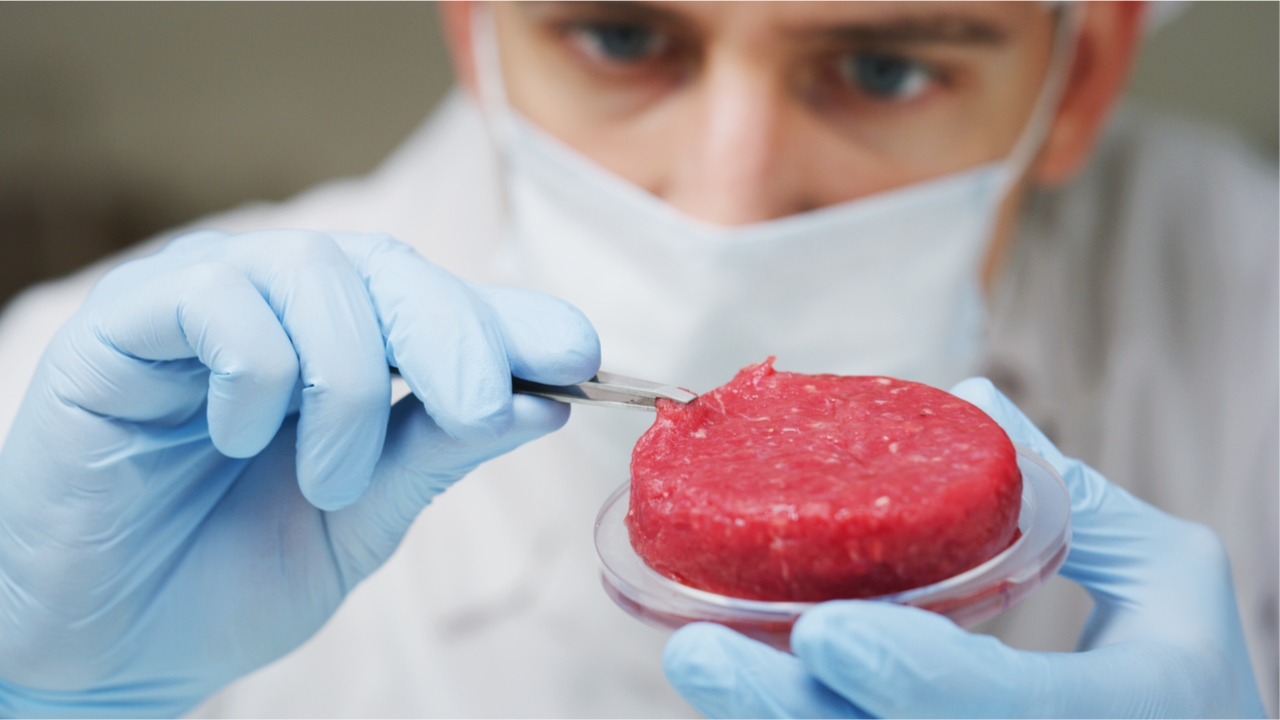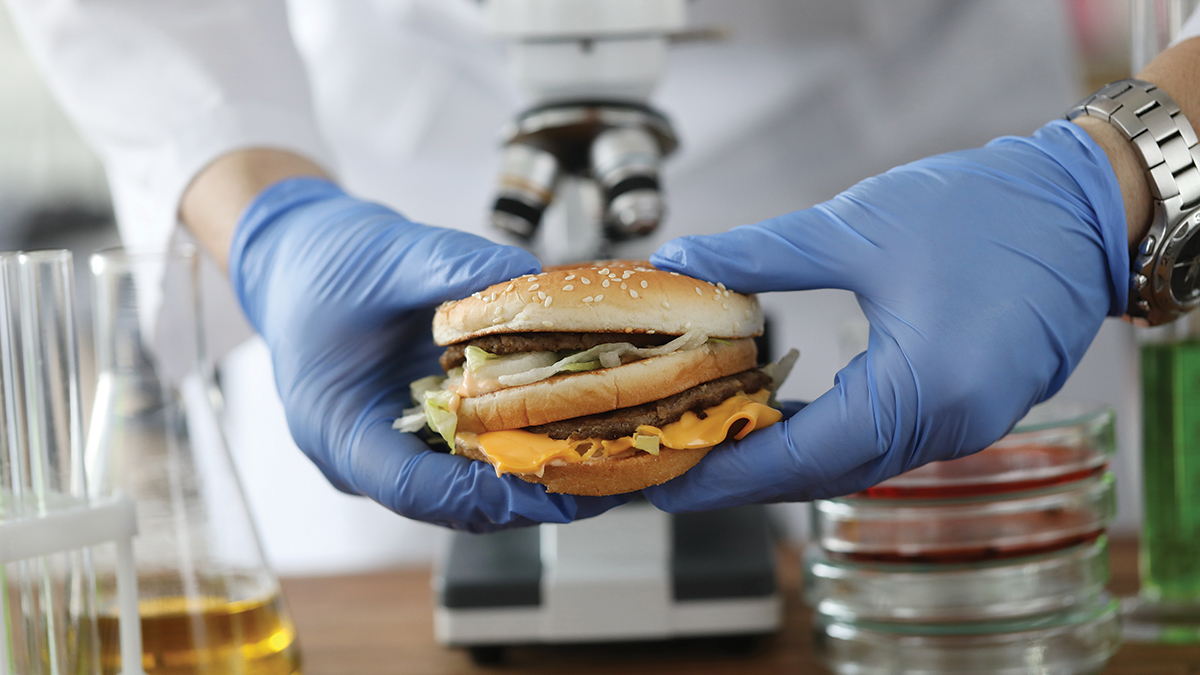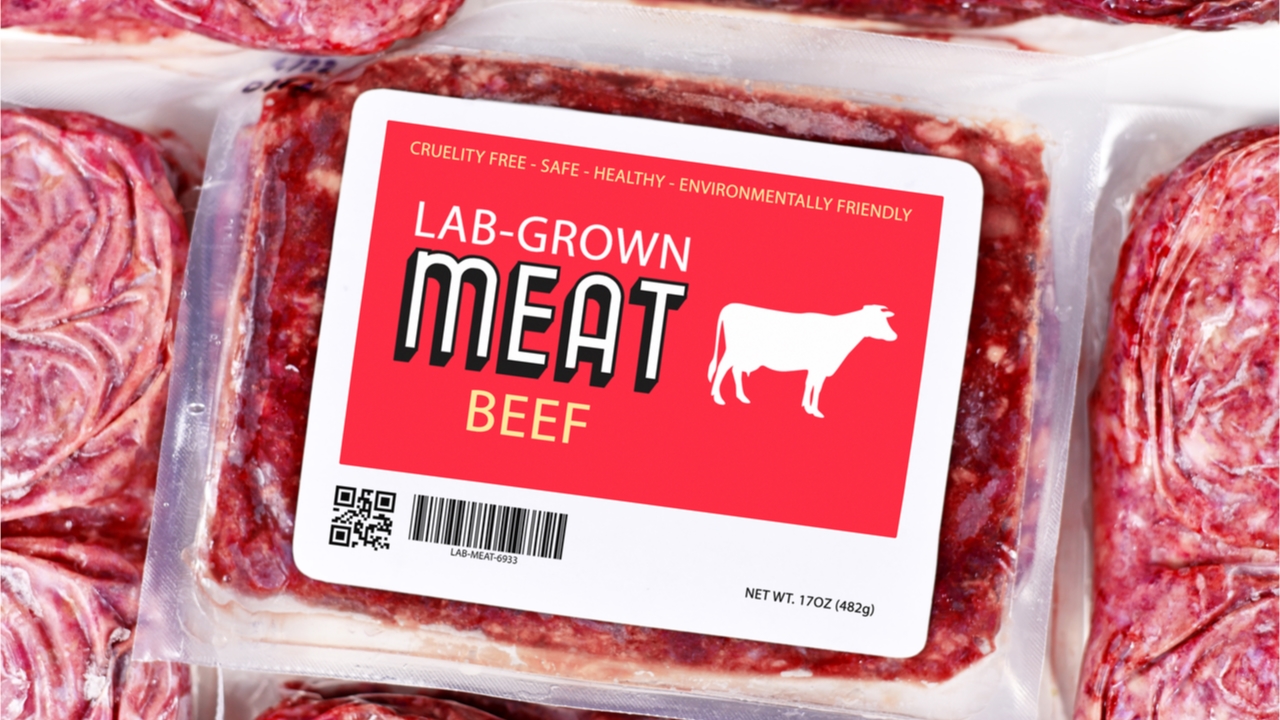Cultured meat

David Burrows looks at developments in the lab-grown meat sector
Twelve months ago, Singapore became the first country to approve a lab-grown meat. “For the first time, meat from real animals that hasn’t required a single animal to be killed or a single tree to be cut down can be sold,” said Josh Tetrick, Chief Executive at Eat Just, the US start-up that had created nuggets from cultivated chicken.
Around the same time, Israel’s then–prime minister Benjamin Netanyahu became the first head of state to publicly taste a steak cultured by Aleph Farms, a start-up cofounded by Technion (Israel Institute of Technology), Strauss Group and food engineer Didier Toubia. "It's delicious and guilt-free, I can't taste the difference," Netanyahu said.
For the first time, meat from real animals that hasn’t required a single animal to be killed or a single tree to be cut down can be sold.
The prospect of meat grown in a vat rather than reared on a farm is attracting greater attention, perhaps more so now than ever given heightened interest in the food we eat and our deeper understanding of the impact it has on the planet and farmed animals. But is guilt-free meat-eating really within reach and, if so, when will Europeans be able to enjoy it? What’s more, will they even want to?
Mimicking meat

Who can forget the world’s first lab-grown burger created by scientists at Maastricht University in the Netherlands in 2013? Only two food experts got to have a bite that day in August and their reaction wasn’t quite as glowing as Netanyahu’s. Heavy on PR, the event was more about proof of principle than the producing the perfect product. It was designed to get scientists, investors, politicians and the public thinking, and on those scores it has been a resounding success.
At the last count in 2020, US$366m (€317m) was raised by cultivated meat companies (six times that in 2019), with 70 companies working on at least 15 different types of meat – from beef to salmon, duck to lamb and even foie gras – according to the Good Food Institute (GFI). This was a “hallmark year for the field of cultivated meat”, GFI reported, with “considerable progress” made in scaling the technology, blossoming commercial partnerships and of course that regulatory precedent set in Singapore.
Look at the challenges facing the traditional livestock sector – from antibiotic use and labour shortages to animal welfare and climate change – and the interest and investment is hardly surprising. The role of cultivated meat in curbing carbon emissions has become particularly hard to resist.
Data published in November at the COP26 climate talks in Glasgow showed greenhouse gas (GHG) emissions from food systems increased 17% between 1990 and 2019 and now total 16.5 billion metric tonnes of CO2e (16.5GtCO2e). Of those, 43% relate to deforestation, enteric fermentation, and livestock manure.
Switch that meat from farms and barns to bioreactors and the climate footprint of beef, pork, and chicken falls by 92%, 52%, and 17%, respectively. Land use also plummets between 63% and 95%, according to the GFI.
However, unpick the life cycle assessments a little and question marks appear. More sustainable approaches to pig and poultry production in particular can put cultivated meat under pressure as far as carbon footprints go. As research by the University of Oxford and the Chatham House think tank have suggested, cultivated meat is not prima facie climatically superior to meat; it is far more nuanced than that.
Cultured meat will also have to go toe-to-toe with the footprints of other protein alternatives. Insects and plants could well win hands down unless the energy efficiency of the lab meat process is improved, and renewable energy is used.
Cash claims
As well as the carbon footprint, there is controversy surrounding the cost of cultivated meats. A report by the US food website The Counter recently claimed that the industry is on a “billion-dollar crash course with reality”. Experts lined up to discredit the claims being made, the product launch deadlines that have been missed and the impracticality of producing significant volumes of cultured meat. As this industry attempts to mainstream and reaches more markets, scrutiny will only intensify.
What is clear is that mimicking the complex biological processes that generate what we know as meat is “mind-bogglingly difficult, and massive technological hurdles to doing it at scale remain
Are we being sold a lame duck? That isn’t clear. What is clear is that mimicking the complex biological processes that generate what we know as meat is “mind-bogglingly difficult, and massive technological hurdles to doing it at scale remain”, according to Tom Philpott, a US writer who has reviewed through the past 15 years of claims about when lab meat will emerge.
Achieving scale in an industry like food is certainly a major headache – and one which Foodnavigator has just reported on. Based on a target of cultivated meat accounting for 10% of the global meat market by 2030 you would need 4,000 facilities each housing 130 bioreactor lines to produce the 40 million tonnes of meat needed. The cost? An eye-watering US$1.3 trillion (€1.1 trillion).
Scale is essential in order for the cost of cultivated meat to come down; how far is moot, and there is a reasonable argument that traditional meat remains artificially cheap. Indeed, start to factor in the costs – environmental and financial (through subsidies) – of conventional meat production and the €1.1 trillion bill mightn’t seem excessive.
Only for the brave
GFI’s recent study suggested production costs could be as low as US$5.66 (€4.90) per kilo come 2030, based on a ‘hypothetical production facility’. This will require, among other things, dramatic cost reductions in growth factor production and (very) “relaxed” payback approaches to returns on investment. “This business is not for the faint of heart,” Eat Just’s Tetrick told Politico earlier this year. “It requires a ton of upfront capital before you see revenue.”
Future Meat, another Israeli-based start-up, has boasted that the production cost of its cultured chicken breast is down to about US$4 (€3.50) and will be half that by next year. “We will launch a product in the US market in the next 18 months that will have a commercially viable price,” chief executive Rom Kshuk told the Financial Times.
Some experts suggest the forecasts being made by industry and GFI are extremely ambitious. The costs of the facilities in particular are contentious. Contamination could be a key issue for those growing meat (bacteria grow much faster than the meat). Pharmaceutical grade plants could be required, which would see costs shoot through the roof. On the other hand, if operations can run like a brewery, then some of those GFI figures come into reach.
There are also unknowns surrounding substitutes for foetal bovine serum (FBS) – a costly and essential ingredient for helping the meat grow. The idea of FBS is a difficult one to swallow for those eschewing meat on animal welfare grounds not to mention companies claiming slaughter-free meat. A search for potentially lucrative alternatives is underway. “[…] it is not clear which cell types or growth medium future producers will use,” noted Nicolas Treich from University Toulouse Capitole in a paper for Environmental and Resource Economics earlier this year.
Treich also detailed some of the wider impacts from scaled up cultivated meat production, for example on farmers and feed companies, as well as on land use and crop production. “Cultured meat may also significantly affect market power,” he wrote. “One common fear is that the world’s protein production sector will become even more concentrated.”
Control over the nutritional composition of the meats is also a concern. “[…] the impact of cultured meat consumption on human health will have to be carefully checked and documented,” noted Sghaier Chriki and Jean-Francois Hocquetee in their paper The myth of cultured meat: a review, last year.
These are just some of the many and varied unknowns and challenges facing a technology that you may have presumed is a done deal. Overcome all of those and another two still loom large, namely regulatory and consumer approval.

Red tape meets green meat
The reality of cultivated meats hitting supermarket shelves or menus in the EU or UK is some way off. “There are significant legal barriers to bringing these products to the market,” explains Katrina Anderson from law firm Osborne Clark.
These products have never been on the market before, so the route to approval will be through Novel Food regulations. Scientific and technical guidance on submissions has been prepared but there don’t appear to be any pending applications at UK (with the Food Standards Agency) or EU (with the European Food Safety Authority) level.
Again, this is a little behind what some in the industry had forecast and there is a long road ahead. Approval following application takes at least 18 months and likely 24 or more, so 2024 is the year now being touted. That’s still pretty ambitious according to Christofer Eggers, a food lawyer based in Frankfurt with Squire Patton Boggs. “To convince EFSA about a lab grown meat will be an uphill battle,” he explains. “I did a novel food application for a fruit juice, and it took years and years to convince toxicologists at EFSA that it was just a fruit juice. But in the end the science will be good enough.”
The sector is itching for things to move faster though. “[…] there doesn’t seem to be a path to market at all” in the UK and EU, complained Michael Seldon, co-founder at cell-based seafood developer Finless Foods’, recently. Other markets, like Japan and the US, could therefore jump the queue and leave Europe behind (so the industry’s threat goes).
Brexit could grease the wheels of any applications in the UK. The country retained relevant EU law and the substance of the risk assessments but final approval rests with ministers – most likely a less time-consuming and elaborate procedure than securing agreement across 27 members states. Predicting how politicians react to science is a thankless task, though. “Even if the science is good, an approval may be rejected because it may ‘send the wrong message to the consumer’,” says Eggers.
Expect heated debates over labelling, for example. Limits have already been placed on the marketing of plant-based alternatives in the EU, while in the US there has been lobbying to ensure meat can only be labelled as such if it comes from animals raised and slaughtered. The most recent ISO definition of vegetarian and vegan, which according to lawyers is not legally binding but influential nonetheless, concluded that cultivated meat products would not be considered acceptable as vegetarian or vegan. That said, some vegan groups are thought to remain open-minded about the idea. “Vegetarians should remain vegetarian. That’s even better for the environment,” said Mark Post, who helped create that first lab burger.
Meat with approval
How these products are labelled and described will have an influential bearing on whether the products take off, or not. GFI has done extensive research on what to call the meats and has plumped for ‘cultivated’. This is supported by a study in the journal Foods this year showing people prefer the terms ‘cultured’ and ‘cultivated’ over ‘cell-based’ and ‘cell-cultured’.
Transparency, too, will be critical. There is growing pressure to offer method-of-production labelling of traditional meat and those involved in the lab-grown equivalent spy an opportunity to gain the upper hand. US food tech firm Upside Foods is reportedly designing a new facility with “immense windows into the production rooms”.
The Foods paper, funded by Aleph Farms, involved 2,034 UK consumers. Only 7% were very familiar with the technology involved in cell-cultured meat; but after reading about it, strong support grew from 25% to 37% while those dead against the idea fell from 23% to 18%. They also envisioned the products making up 40% of their meat intake – a “remarkable” level of interest for a technology and new food category that is not yet on market, the authors noted.
The attention on cultivated meats since that day in August 2013 has certainly been impressive but buying a burger in a bar or a steak in the shops that was grown in a lab is a few years away. It is, however, inevitable. What it will mean in terms of carbon emissions, people’s health, access and affordability, etc. remains less clear. As synthetic biologist Christina Agapakis put it at the time in a piece for Scientific American: “It is one small bite at a press conference, sold as one giant leap towards reducing the damaging effects of meat. These are big claims worthy of close scrutiny.” And that should only continue.



